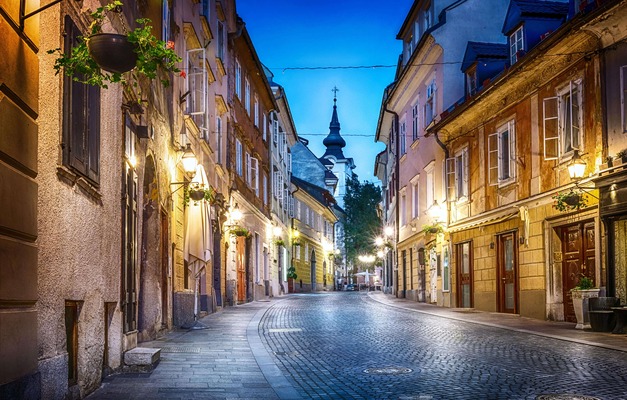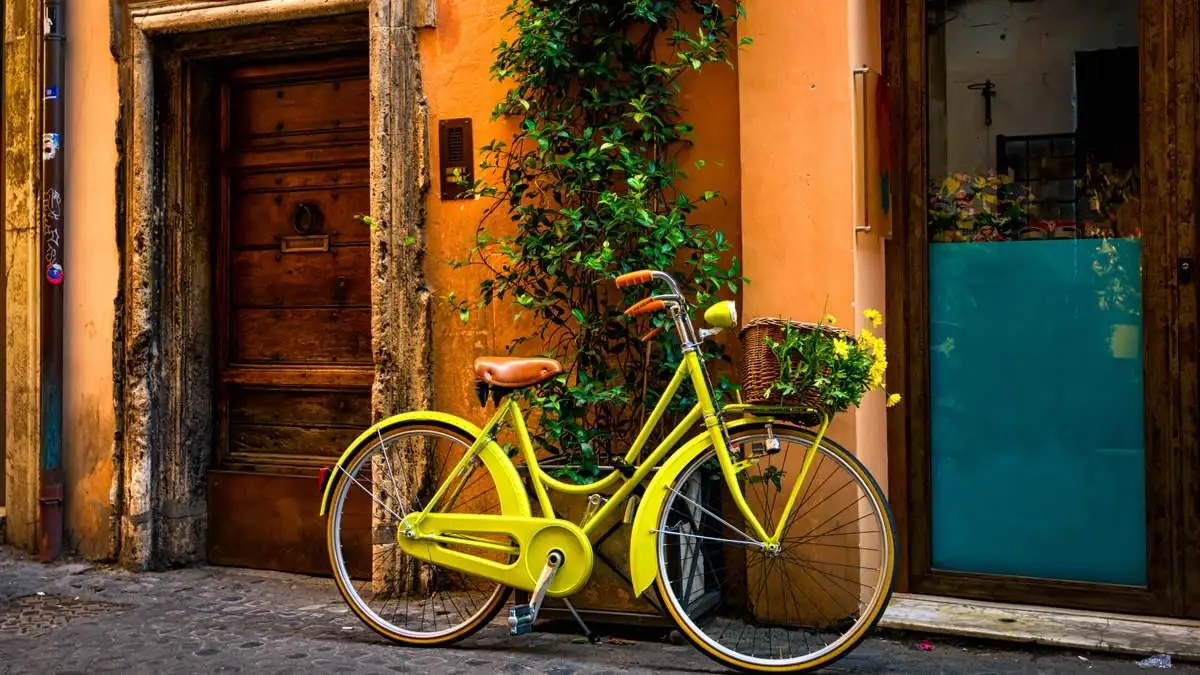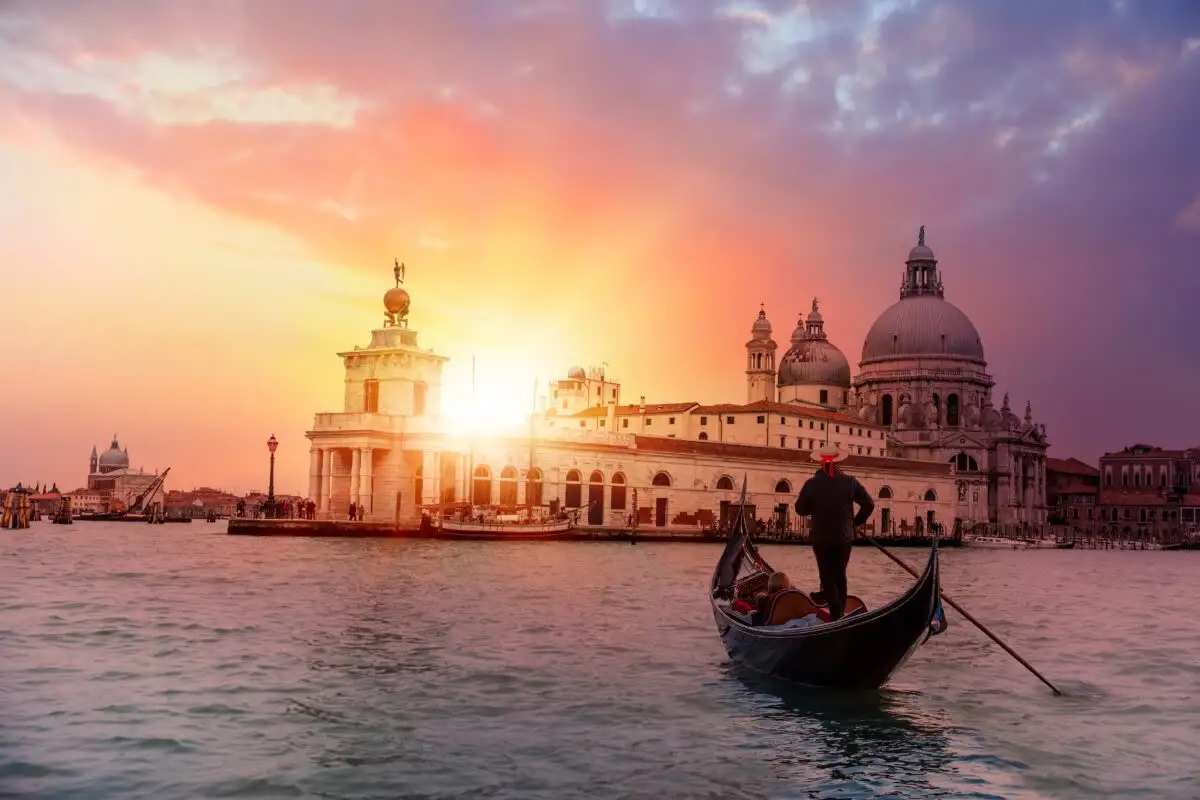
Perfectly Planned Week in Prague, Vienna & Budapest
 7 Day Tour of Prague, Budapest and Vienna
7 Day Tour of Prague, Budapest and Vienna
Overview
Trip Map
Itinerary
Inclusions
Reviews







7 Days 6 Nights
Best Time: Jan-Dec
Cultural Exploration
History Buffs
Take a whirlwind journey through the heart of Europe, discovering a seamless blend of history and modernity in Prague, Vienna, and Budapest in just one week. You'll wander through cobbled streets and grand boulevards, each step taking you deeper into a story centuries in the making. With private guided tours in each city, you'll experience the pulse of these magnificent capitals like a local. Our detailed travel guidance ensures that every moment of your adventure is expertly planned, offering an unforgettable experience. From the charm of medieval bridges to the grandeur of palaces and other glorious buildings, prepare to be captivated.
- Save time and experience a bit of adventure by taking an overnight train from Prague to Budapest
- In Prague, feel the echo of history beneath the spires of famed churches such as St Vitus cathedral
- Lose yourself in the maze of Prague's Old Town, finding charming shops & cafes around every corner
- Delight in the grandeur of Budapest's Parliament Building, an architectural masterpiece
- Cross the Danube on Budapest's famous Chain Bridge, a symbol of connection and resilience
- Savor Vienna's renowned coffee house tradition, where each sip transports you to a bygone era
Take a whirlwind journey through the heart of Europe, discovering a seamless blend of history and modernity in Prague, Vienna, and Budapest in just one week. You'll wander through cobbled streets and grand boulevards, each step taking you deeper into a story centuries in the making. With private guided tours in each city, you'll experience the pulse of these magnificent capitals like a local. Our detailed travel guidance ensures that every moment of your adventure is expertly planned, offering an unforgettable experience. From the charm of medieval bridges to the grandeur of palaces and other glorious buildings, prepare to be captivated.
- Save time and experience a bit of adventure by taking an overnight train from Prague to Budapest
- In Prague, feel the echo of history beneath the spires of famed churches such as St Vitus cathedral
- Lose yourself in the maze of Prague's Old Town, finding charming shops & cafes around every corner
- Delight in the grandeur of Budapest's Parliament Building, an architectural masterpiece
- Cross the Danube on Budapest's famous Chain Bridge, a symbol of connection and resilience
- Savor Vienna's renowned coffee house tradition, where each sip transports you to a bygone era

Prague Castle
Castles & Chateaux

Charles Bridge
Historic Landmarks

Central Market
Street Markets

Castle Hill
Castles & Chateaux

Schönbrunn Palace & Zoo
Parks & Gardens

Spanish Riding School
Cultural
Must see sights

Prague Castle
Castles & Chateaux

Charles Bridge
Historic Landmarks

Central Market
Street Markets

Castle Hill
Castles & Chateaux

Schönbrunn Palace & Zoo
Parks & Gardens

Spanish Riding School
Cultural
Starting from
$1695
per person
 Not included
Not included Secure Your Customizable Trip
Enter your details to embark on a journey that can be tailored just for you.
Start
Travelers
0 travelers
Add Room
Remove Room
Preferred Hotel Stars
Select Hotel Stars
Craft Your Own Itinerary
Select your interests and destinations for a trip plan inspired by you.
Central Europe in a Week Trip - Map & Itinerary
Enable/Disable Map Scrolling
Click To Make Map Interactive

Central Europe in a Week Trip Timeline
 Edit Details
Edit DetailsArrival
1 nights
Prague
Czech Republic
Overnight Sleeper Train: 10.5h
2 nights
Budapest
Hungary
Train: 3h
2 nights
Vienna
Austria
Departure
Day-By-Day Itinerary of Central Europe in a Week Trip
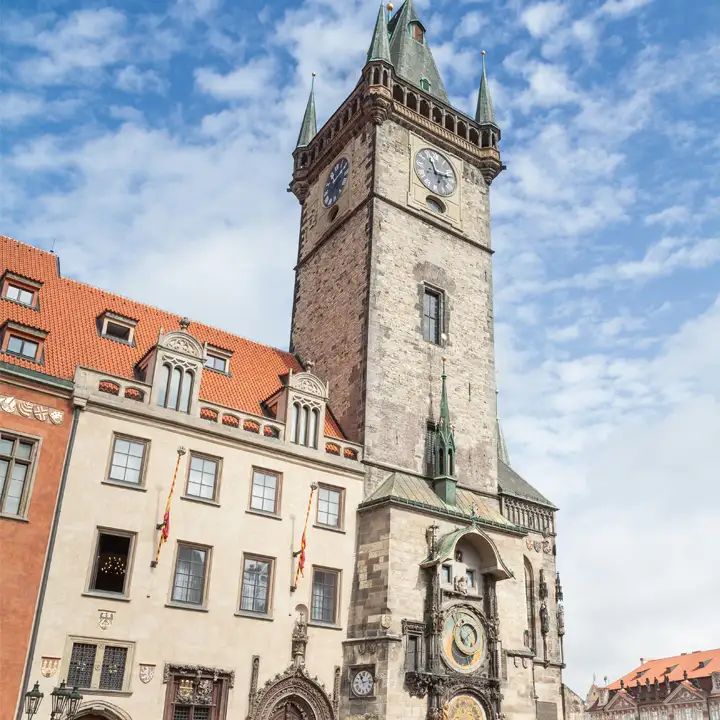
Day 1
Arrive Prague
Day 1
Arrive Prague




To Be Determined
Prague Airport Pickup
An English-speaking driver will meet you inside the terminal holding a sign with your name. Your private transfer will be scheduled for 20 minutes after your flight arrives—no vehicle sharing involved. The cost of this ride is already included in your itinerary package.

Day 1
Arrive Prague


Day 1
Arrive Prague





To Be Determined:
Prague Airport Pickup
Afternoon:
Old Town
Late Afternoon:
Jewish Quarter
Early Evening/Evening:
New Town


Day 2
Prague
Day 2
Prague





9:00 AM - 12:30 PM
Royal Route Guided Tour
Embark on a captivating guided walk that brings you through the storied heart of Prague along the Royal Coronation Route, culminating at the awe-inspiring Prague Castle—the largest castle complex in Europe. Along the way, you'll cross the famous Charles Bridge, where each stone tells tales of the city’s dramatic past. Your guide will either lead you through the castle courtyards and into the stunning St. Vitus Cathedral, or up through the noble quarters of Hradčany, with sweeping views from the Castle Steps over the charming Little Quarter below.

Charles Bridge
Stroll across a legendary medieval bridge lined with saints and buzzing with life.
Show More
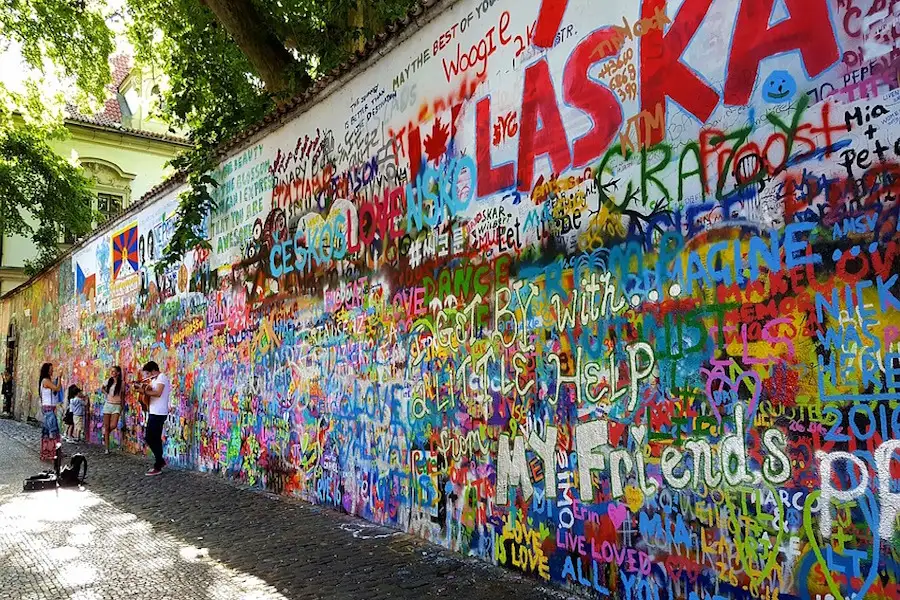
Maltese Square & Lennon Wall
Discover a wall of imagination and protest—and a peaceful square just steps away.
Show More

Prague Castle
Visit the most iconic and expansive castle complex in Europe, rich in centuries of history.
Show More

Charles Bridge
Stroll across a legendary medieval bridge lined with saints and buzzing with life.
Show More

Maltese Square & Lennon Wall
Discover a wall of imagination and protest—and a peaceful square just steps away.
Show More

Prague Castle
Visit the most iconic and expansive castle complex in Europe, rich in centuries of history.
Show More

Charles Bridge
Stroll across a legendary medieval bridge lined with saints and buzzing with life.
Show More
prev
next

Day 2
Prague

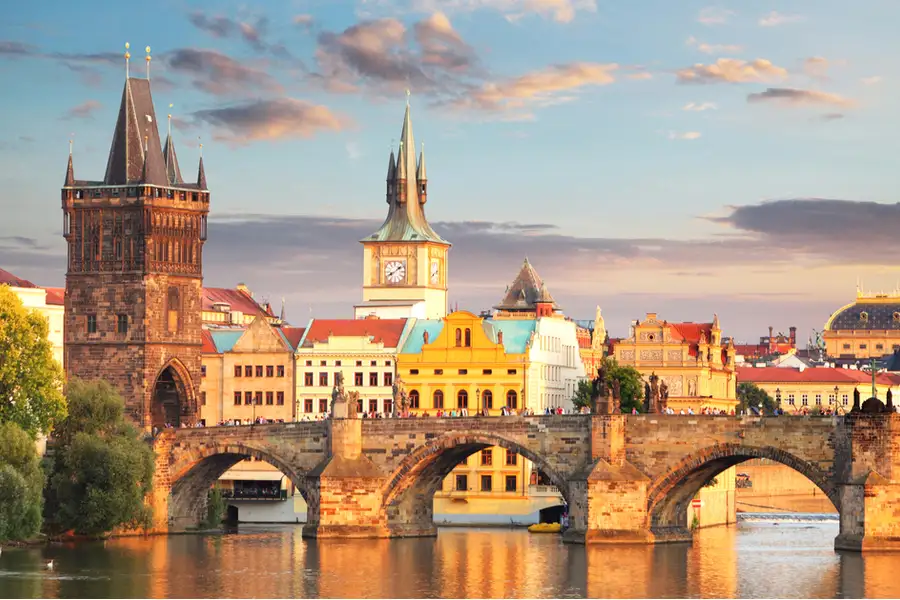
Charles Bridge
 Highlight of Royal Route Guided Tour
Highlight of Royal Route Guided TourStroll across a legendary medieval bridge lined with saints and buzzing with life.
Built in 1357 by order of Emperor Charles IV, this iconic stone bridge was the only crossing over the Vltava River for nearly five centuries. Today, it’s adorned with 30 statues of saints in Baroque style and is a magnet for artists, musicians, and street performers. It remains a central artery of Prague’s historic core and an essential stop on any visit.

Maltese Square & Lennon Wall
 Highlight of Royal Route Guided Tour
Highlight of Royal Route Guided TourDiscover a wall of imagination and protest—and a peaceful square just steps away.
Since the 1960s, this wall has served as an outlet for public expression, but after John Lennon’s death in 1980, it became a symbol of peace and resistance, filled with graffiti inspired by his songs and ideals. During Communist rule, the wall became a place for dissent, and it continues to evolve with new artwork daily. Nearby, the cozy Maltese Square offers a quiet corner of the city where you can catch your breath, just moments away from the tourist crowds.
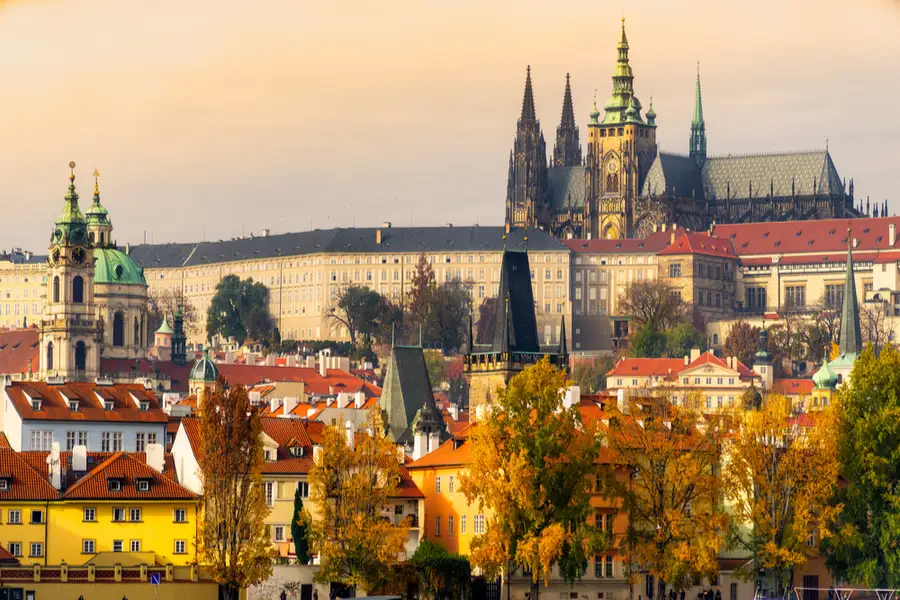
Prague Castle
 Highlight of Royal Route Guided Tour
Highlight of Royal Route Guided TourVisit the most iconic and expansive castle complex in Europe, rich in centuries of history.
With its origins tracing back to the 9th century, Prague Castle spans an enormous area and includes a variety of architectural styles and important landmarks. Within its fortified walls are the majestic St. Vitus Cathedral, the Romanesque Basilica of St. George, royal gardens, noble palaces, and a medieval monastery. This historic seat of power for Bohemian kings and Czech presidents is also a UNESCO World Heritage Site and ranks among the country’s most visited cultural destinations.

Charles Bridge
 Highlight of Royal Route Guided Tour
Highlight of Royal Route Guided TourStroll across a legendary medieval bridge lined with saints and buzzing with life.
Built in 1357 by order of Emperor Charles IV, this iconic stone bridge was the only crossing over the Vltava River for nearly five centuries. Today, it’s adorned with 30 statues of saints in Baroque style and is a magnet for artists, musicians, and street performers. It remains a central artery of Prague’s historic core and an essential stop on any visit.

Maltese Square & Lennon Wall
 Highlight of Royal Route Guided Tour
Highlight of Royal Route Guided TourDiscover a wall of imagination and protest—and a peaceful square just steps away.
Since the 1960s, this wall has served as an outlet for public expression, but after John Lennon’s death in 1980, it became a symbol of peace and resistance, filled with graffiti inspired by his songs and ideals. During Communist rule, the wall became a place for dissent, and it continues to evolve with new artwork daily. Nearby, the cozy Maltese Square offers a quiet corner of the city where you can catch your breath, just moments away from the tourist crowds.

Prague Castle
 Highlight of Royal Route Guided Tour
Highlight of Royal Route Guided TourVisit the most iconic and expansive castle complex in Europe, rich in centuries of history.
With its origins tracing back to the 9th century, Prague Castle spans an enormous area and includes a variety of architectural styles and important landmarks. Within its fortified walls are the majestic St. Vitus Cathedral, the Romanesque Basilica of St. George, royal gardens, noble palaces, and a medieval monastery. This historic seat of power for Bohemian kings and Czech presidents is also a UNESCO World Heritage Site and ranks among the country’s most visited cultural destinations.

Charles Bridge
 Highlight of Royal Route Guided Tour
Highlight of Royal Route Guided TourStroll across a legendary medieval bridge lined with saints and buzzing with life.
Built in 1357 by order of Emperor Charles IV, this iconic stone bridge was the only crossing over the Vltava River for nearly five centuries. Today, it’s adorned with 30 statues of saints in Baroque style and is a magnet for artists, musicians, and street performers. It remains a central artery of Prague’s historic core and an essential stop on any visit.
prev
next

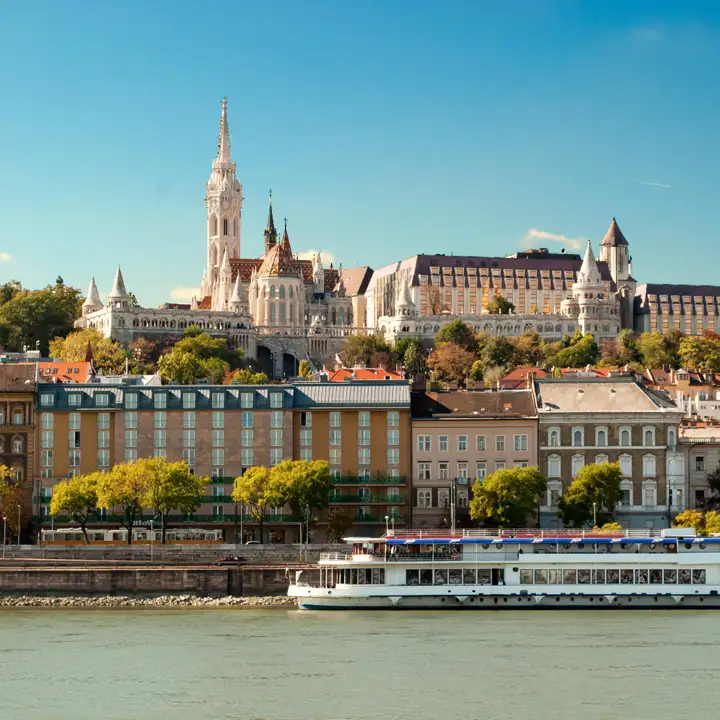
Day 3
Budapest
Day 3
Budapest




8:29 AM
Private Transfer to Hotel
When you arrive in Budapest, a private driver will be waiting for you directly on the platform, holding a sign with your name. They’ll escort you to your vehicle and take you straight to your hotel. There’s no need to worry about payment at the time of pickup—this service is already included in your itinerary, so you can simply relax and enjoy the ride.

Day 3
Budapest


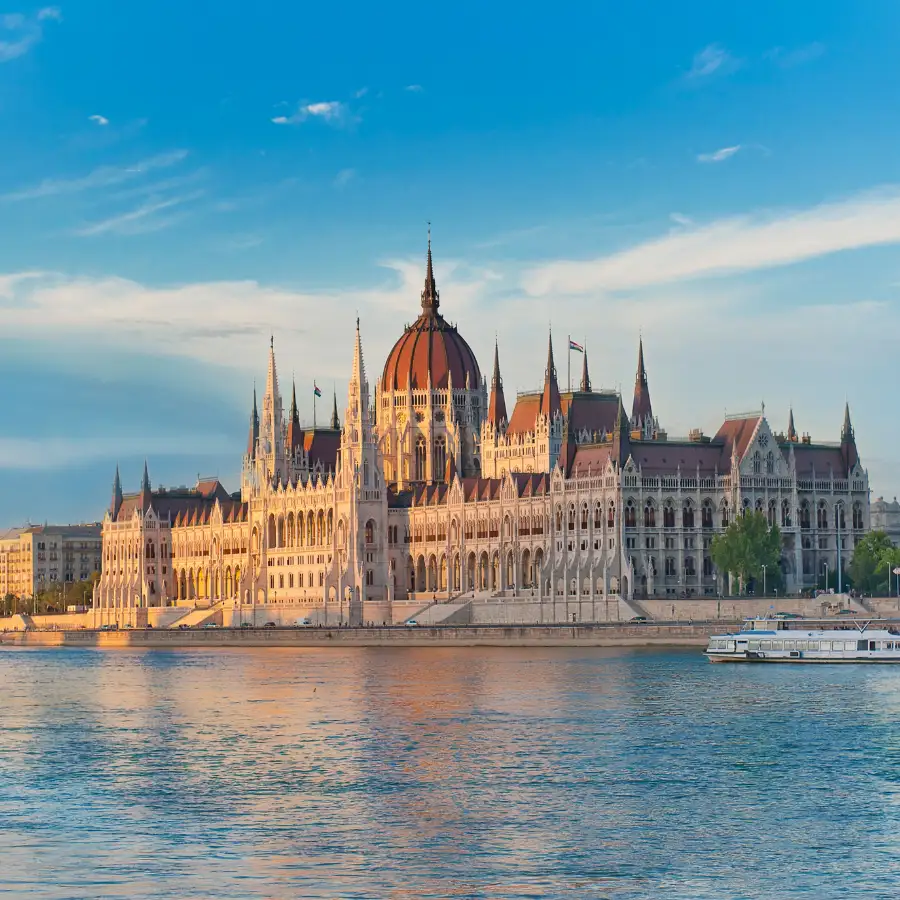
Day 4
Budapest
Day 4
Budapest



Morning
Hungarian Parliament & Nearby
Overlooking the Danube in grand style, the Hungarian Parliament building is a feast for the eyes—both inside and out. Its riverfront façade, with spires and a soaring dome, is one of Budapest’s most iconic views. Step inside and you'll be immersed in opulence: rich detail, gold leaf, and sweeping staircases create an atmosphere so regal, you half expect royalty to appear.
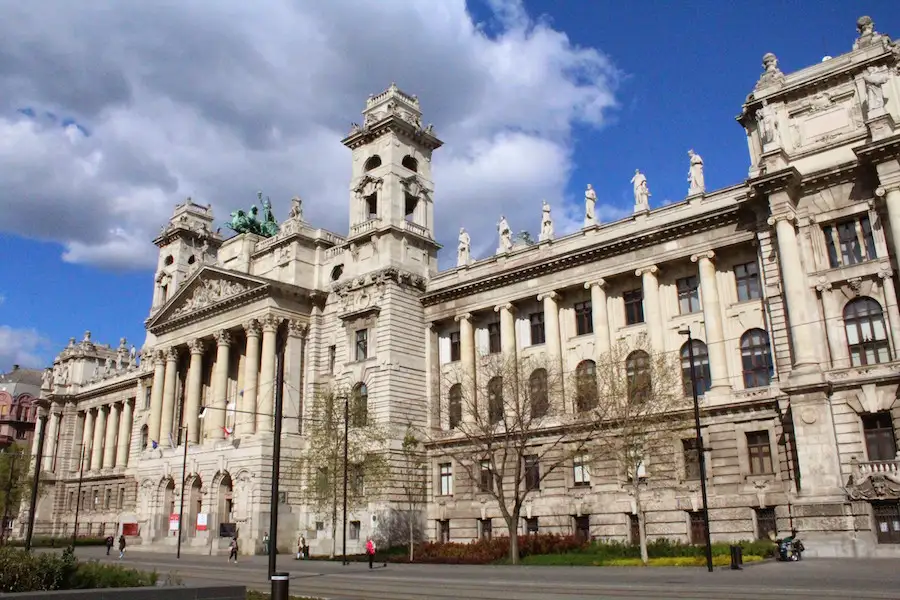
Former Museum of Ethnography
Admire one of Budapest’s finest architectural gems—now quietly standing across from Parliament.
Show More

Shoes on the Danube Bank
Pause for a moment of remembrance at one of Budapest’s most poignant memorials.
Show More
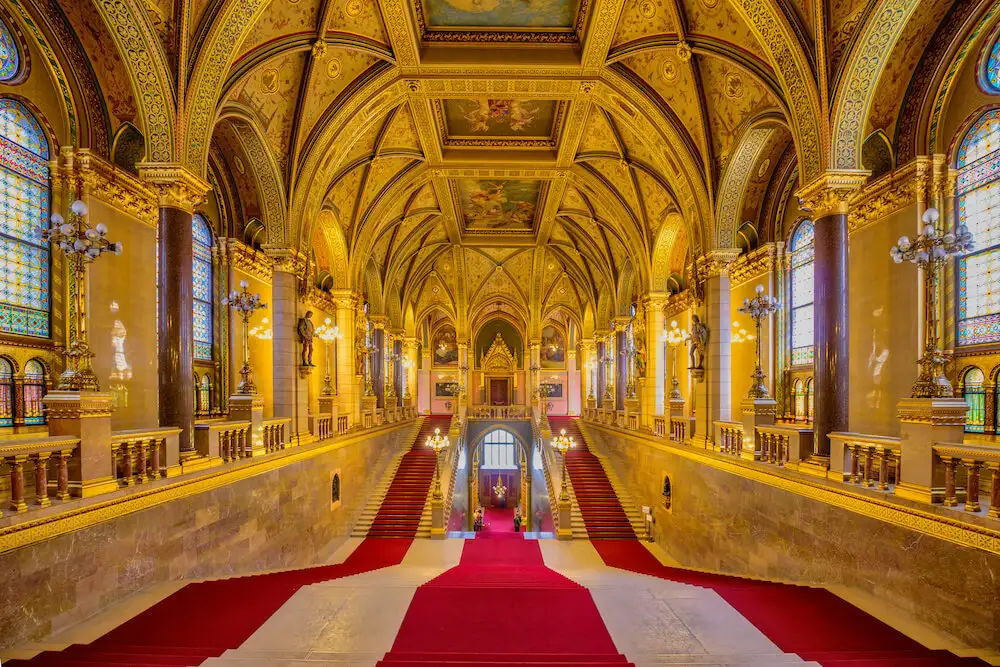
Hungarian Parliament
Join a guided tour through Hungary’s most extravagant symbol of state power.
Show More

Former Museum of Ethnography
Admire one of Budapest’s finest architectural gems—now quietly standing across from Parliament.
Show More

Shoes on the Danube Bank
Pause for a moment of remembrance at one of Budapest’s most poignant memorials.
Show More

Hungarian Parliament
Join a guided tour through Hungary’s most extravagant symbol of state power.
Show More

Former Museum of Ethnography
Admire one of Budapest’s finest architectural gems—now quietly standing across from Parliament.
Show More
prev
next

Day 4
Budapest


Former Museum of Ethnography
 Highlight of Hungarian Parliament & Nearby
Highlight of Hungarian Parliament & NearbyAdmire one of Budapest’s finest architectural gems—now quietly standing across from Parliament.
Though the Ethnographic Museum has moved to a new location in City Park, its former home remains a stunner. This neo-Renaissance building originally served as the Supreme Court and famously came in second place in the Parliament design competition. Some visitors find its interiors just as impressive as the Parliament itself, making it well worth a look, even if only from the outside.
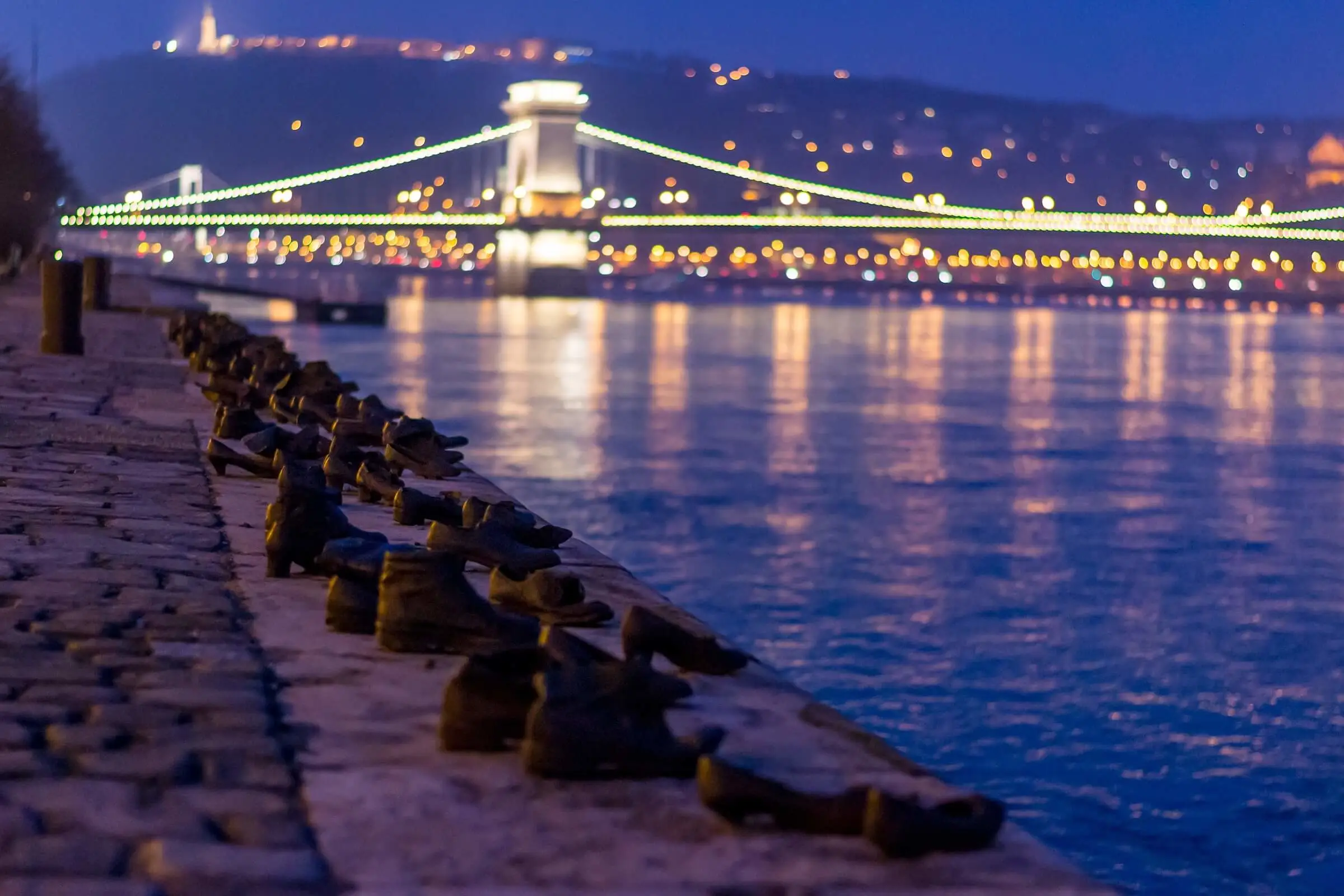
Shoes on the Danube Bank
 Highlight of Hungarian Parliament & Nearby
Highlight of Hungarian Parliament & NearbyPause for a moment of remembrance at one of Budapest’s most poignant memorials.
Along the Danube’s edge, dozens of bronze shoes line the promenade—silent tributes to Jewish victims executed during WWII by Hungary’s fascist Arrow Cross party. Victims were forced to remove their shoes before being shot into the river. This powerful installation captures the inhumanity of those times and has become one of the city’s most haunting and meaningful monuments.

Hungarian Parliament
 Highlight of Hungarian Parliament & Nearby
Highlight of Hungarian Parliament & NearbyJoin a guided tour through Hungary’s most extravagant symbol of state power.
This colossal Gothic Revival landmark is adorned with an explosion of turrets, arches, and intricate stonework, all crowned by a massive central dome. Beneath it, under tight guard, rests the sacred Crown of Saint Stephen. The interior tour reveals the crown jewels, stately halls, and the richly decorated Parliament chambers. Due to high demand, it's strongly advised to book tickets ahead of time.

Former Museum of Ethnography
 Highlight of Hungarian Parliament & Nearby
Highlight of Hungarian Parliament & NearbyAdmire one of Budapest’s finest architectural gems—now quietly standing across from Parliament.
Though the Ethnographic Museum has moved to a new location in City Park, its former home remains a stunner. This neo-Renaissance building originally served as the Supreme Court and famously came in second place in the Parliament design competition. Some visitors find its interiors just as impressive as the Parliament itself, making it well worth a look, even if only from the outside.

Shoes on the Danube Bank
 Highlight of Hungarian Parliament & Nearby
Highlight of Hungarian Parliament & NearbyPause for a moment of remembrance at one of Budapest’s most poignant memorials.
Along the Danube’s edge, dozens of bronze shoes line the promenade—silent tributes to Jewish victims executed during WWII by Hungary’s fascist Arrow Cross party. Victims were forced to remove their shoes before being shot into the river. This powerful installation captures the inhumanity of those times and has become one of the city’s most haunting and meaningful monuments.

Hungarian Parliament
 Highlight of Hungarian Parliament & Nearby
Highlight of Hungarian Parliament & NearbyJoin a guided tour through Hungary’s most extravagant symbol of state power.
This colossal Gothic Revival landmark is adorned with an explosion of turrets, arches, and intricate stonework, all crowned by a massive central dome. Beneath it, under tight guard, rests the sacred Crown of Saint Stephen. The interior tour reveals the crown jewels, stately halls, and the richly decorated Parliament chambers. Due to high demand, it's strongly advised to book tickets ahead of time.

Former Museum of Ethnography
 Highlight of Hungarian Parliament & Nearby
Highlight of Hungarian Parliament & NearbyAdmire one of Budapest’s finest architectural gems—now quietly standing across from Parliament.
Though the Ethnographic Museum has moved to a new location in City Park, its former home remains a stunner. This neo-Renaissance building originally served as the Supreme Court and famously came in second place in the Parliament design competition. Some visitors find its interiors just as impressive as the Parliament itself, making it well worth a look, even if only from the outside.
prev
next


Day 5
Budapest to Vienna
Day 5
Budapest to Vienna





8:40 AM
Taxi to Rail Station
Budapest has three main train stations used for international and domestic departures: Keleti (East), Nyugati (West), and Déli (South). Most travelers leave from Keleti, but it's important to double-check your departure point. If your accommodation is nearby, walking might be the simplest and most cost-effective option. Each station is conveniently connected to the metro system, so public transit is often the easiest and quickest way to get there. Hotels can also arrange trusted taxi services, and private transfers may assist with luggage. Be sure to use your travel app to locate platforms and navigate the station with ease.

Day 5
Budapest to Vienna



Day 6
Vienna
Day 6
Vienna



Morning
Imperial Vienna
Step into the grandeur of Vienna’s imperial past, where echoes of the powerful Habsburg dynasty still resonate through magnificent architecture and stately squares. The vast Hofburg Palace complex once served as the winter residence of Austria’s emperors and the administrative heart of a sprawling European empire. Within walking distance, you'll also find the prestigious State Opera House and other major monuments. Even though the empire has long faded, its legacy remains in these awe-inspiring buildings that continue to dazzle visitors today.

Spanish Riding School
Watch centuries of tradition unfold at this prestigious institution of classical horsemanship.
Show More

Café Central
Sip coffee and dine where legends once lingered.
Show More

Hofburg Palace
Wander through the palaces, museums, and gardens of Vienna’s imperial seat.
Show More

State Opera House
Take a tour or catch a live performance at one of the world’s most iconic opera venues.
Show More

Imperial Treasury
Explore a millennium of royal riches in the heart of the Hofburg complex.
Show More

Spanish Riding School
Watch centuries of tradition unfold at this prestigious institution of classical horsemanship.
Show More

Café Central
Sip coffee and dine where legends once lingered.
Show More

Hofburg Palace
Wander through the palaces, museums, and gardens of Vienna’s imperial seat.
Show More

State Opera House
Take a tour or catch a live performance at one of the world’s most iconic opera venues.
Show More

Imperial Treasury
Explore a millennium of royal riches in the heart of the Hofburg complex.
Show More

Spanish Riding School
Watch centuries of tradition unfold at this prestigious institution of classical horsemanship.
Show More
prev
next

Day 6
Vienna


Spanish Riding School
 Highlight of Imperial Vienna
Highlight of Imperial ViennaWatch centuries of tradition unfold at this prestigious institution of classical horsemanship.
Dating back to 1572, the Spanish Riding School is world-famous for its elegant performances and the dazzling skills of its Lipizzaner stallions. Originally founded to train horses for battlefield maneuvers, it now focuses on preserving the art of classical dressage. Demonstrations and full shows are held in a historic Baroque riding hall within the palace grounds.

Café Central
 Highlight of Imperial Vienna
Highlight of Imperial ViennaSip coffee and dine where legends once lingered.
With soaring ceilings, marble pillars, and an air of 19th-century sophistication, Café Central remains one of Vienna’s most storied cafés. Intellectual giants like Sigmund Freud, Leon Trotsky, and Stefan Zweig once gathered here for lively conversation and refined cuisine. It’s still one of the city’s most popular stops, so booking a table in advance is highly recommended.

Hofburg Palace
 Highlight of Imperial Vienna
Highlight of Imperial ViennaWander through the palaces, museums, and gardens of Vienna’s imperial seat.
The Hofburg is more than just one building—it's a sprawling network of palaces, museums, state apartments, chapels, and courtyards that once housed the imperial family. It now hosts several major museums, including the Sisi Museum and the Imperial Apartments. Take time to explore the tranquil Burggarten and the grand squares that once buzzed with imperial pageantry.

State Opera House
 Highlight of Imperial Vienna
Highlight of Imperial ViennaTake a tour or catch a live performance at one of the world’s most iconic opera venues.
Originally the crown jewel of the Austro-Hungarian music scene, the opera house remains a towering cultural symbol. While much of it was destroyed during WWII bombings, the opulent foyer was miraculously preserved and the building faithfully restored. Whether you attend a performance or take a guided tour, you’ll understand why this venue continues to attract top talent and opera lovers from across the globe. Across the street, don't miss the renowned Hotel Sacher—birthplace of the famed Sachertorte.

Imperial Treasury
 Highlight of Imperial Vienna
Highlight of Imperial ViennaExplore a millennium of royal riches in the heart of the Hofburg complex.
This dazzling museum houses the ceremonial treasures of the Habsburg dynasty, including crowns, jewel-encrusted swords, imperial robes, religious relics, and rare gemstones. The collection offers a glimpse into the wealth and symbolism of empire, spanning both secular and sacred traditions. An audio guide is highly recommended to enrich the experience.

Spanish Riding School
 Highlight of Imperial Vienna
Highlight of Imperial ViennaWatch centuries of tradition unfold at this prestigious institution of classical horsemanship.
Dating back to 1572, the Spanish Riding School is world-famous for its elegant performances and the dazzling skills of its Lipizzaner stallions. Originally founded to train horses for battlefield maneuvers, it now focuses on preserving the art of classical dressage. Demonstrations and full shows are held in a historic Baroque riding hall within the palace grounds.

Café Central
 Highlight of Imperial Vienna
Highlight of Imperial ViennaSip coffee and dine where legends once lingered.
With soaring ceilings, marble pillars, and an air of 19th-century sophistication, Café Central remains one of Vienna’s most storied cafés. Intellectual giants like Sigmund Freud, Leon Trotsky, and Stefan Zweig once gathered here for lively conversation and refined cuisine. It’s still one of the city’s most popular stops, so booking a table in advance is highly recommended.

Hofburg Palace
 Highlight of Imperial Vienna
Highlight of Imperial ViennaWander through the palaces, museums, and gardens of Vienna’s imperial seat.
The Hofburg is more than just one building—it's a sprawling network of palaces, museums, state apartments, chapels, and courtyards that once housed the imperial family. It now hosts several major museums, including the Sisi Museum and the Imperial Apartments. Take time to explore the tranquil Burggarten and the grand squares that once buzzed with imperial pageantry.

State Opera House
 Highlight of Imperial Vienna
Highlight of Imperial ViennaTake a tour or catch a live performance at one of the world’s most iconic opera venues.
Originally the crown jewel of the Austro-Hungarian music scene, the opera house remains a towering cultural symbol. While much of it was destroyed during WWII bombings, the opulent foyer was miraculously preserved and the building faithfully restored. Whether you attend a performance or take a guided tour, you’ll understand why this venue continues to attract top talent and opera lovers from across the globe. Across the street, don't miss the renowned Hotel Sacher—birthplace of the famed Sachertorte.

Imperial Treasury
 Highlight of Imperial Vienna
Highlight of Imperial ViennaExplore a millennium of royal riches in the heart of the Hofburg complex.
This dazzling museum houses the ceremonial treasures of the Habsburg dynasty, including crowns, jewel-encrusted swords, imperial robes, religious relics, and rare gemstones. The collection offers a glimpse into the wealth and symbolism of empire, spanning both secular and sacred traditions. An audio guide is highly recommended to enrich the experience.

Spanish Riding School
 Highlight of Imperial Vienna
Highlight of Imperial ViennaWatch centuries of tradition unfold at this prestigious institution of classical horsemanship.
Dating back to 1572, the Spanish Riding School is world-famous for its elegant performances and the dazzling skills of its Lipizzaner stallions. Originally founded to train horses for battlefield maneuvers, it now focuses on preserving the art of classical dressage. Demonstrations and full shows are held in a historic Baroque riding hall within the palace grounds.
prev
next


Day 7
Depart Vienna
Day 7
Depart Vienna

To Be Determined
Taxi Transfer to Vienna Airport
Taxis in Vienna are known for being reliable and fairly priced, often making them a better deal than pre-booked transfers. Your hotel can easily arrange a pickup. Aim to depart about three hours before your flight; during rush hour, it’s wise to allow an extra 15 minutes just in case.

Day 7
Depart Vienna


What's Included In Central Europe in a Week Trip

Pre-Paid Tours and Activities:
- Prague Castle & Royal Route Guided Walk
- Best of Budapest: Half-Day Walking Tour of Highlights & Hidden Finds
- Guided Walk through Vienna's Inner City

Pre-Paid Transportation:
- 2nd Class Train Tickets from Budapest-Keleti to Wien Hbf
- Train Tickets from Prague to Budapest
- Public Transport Tickets for Vienna
- Private Transfer from the Prague Airport
- Private Transfer from the Budapest Rail Station

Accommodation:
- 1 nights at a hotel of your choice in Prague
- 2 nights at a hotel of your choice in Budapest
- 2 nights at a hotel of your choice in Vienna

Go Real Travel Mobile App:
- Itinerary Plan & Reservations Info
- Points of Interest
- Detailed Travel Information
- Maps & Directions
Other Trips You May Like

10 Days
From$2249USD
Perfect Whirlwind Itinerary to Prague, Salzburg, Vienna & Budapest

Czech Republic, Austria, Hungary
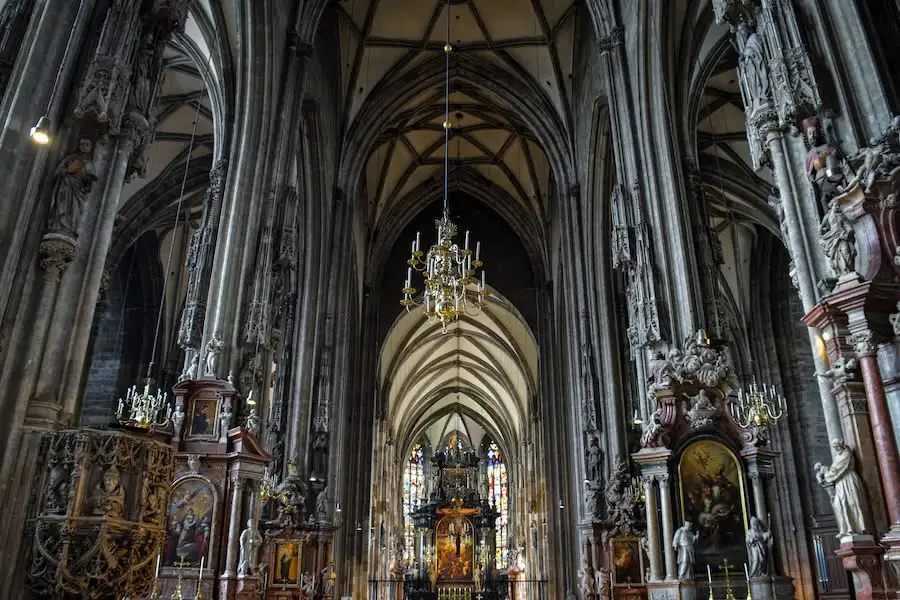
12 Days
From$2290USD
Enchanting Central Europe: Prague, Salzburg, Vienna, and Budapest

Czech Republic, Austria, Hungary

12 Days
From$2350USD

10 Days
From$1799USD
Central European Rhapsody: A Cultural and Historical Odyssey

Czech Republic, Austria, Hungary

14 Days
From$2350USD
Imperial Elegance: Prague, Vienna and Budapest Itinerary 14 Days

Czech Republic, Austria, Hungary

15 Days
From$2750USD
Prague, Vienna, and Budapest, 15 Days of Must See Sights & Local Scenes

Czech Republic, Austria, Hungary

8 Days
From$1425USD
Enchanting Central Europe: 8-Days in Prague, Vienna & Budapest

Czech Republic, Austria, Hungary

12 Days
From$2675USD
Jewish Heritage and Scenic Rivers: A Journey through Prague, Vienna, and Budapest

Hungary, Austria, Czech Republic

12 Days
From$2200USD
A 12-Day Prague, Vienna, Budapest, and Bratislava Itinerary

Czech Republic, Austria, Slovakia, Hungary

10 Days
From$2249USD
Perfect Whirlwind Itinerary to Prague, Salzburg, Vienna & Budapest

Czech Republic, Austria, Hungary

12 Days
From$2290USD
Enchanting Central Europe: Prague, Salzburg, Vienna, and Budapest

Czech Republic, Austria, Hungary

12 Days
From$2350USD

10 Days
From$1799USD
Central European Rhapsody: A Cultural and Historical Odyssey

Czech Republic, Austria, Hungary

14 Days
From$2350USD
Imperial Elegance: Prague, Vienna and Budapest Itinerary 14 Days

Czech Republic, Austria, Hungary

15 Days
From$2750USD
Prague, Vienna, and Budapest, 15 Days of Must See Sights & Local Scenes

Czech Republic, Austria, Hungary

8 Days
From$1425USD
Enchanting Central Europe: 8-Days in Prague, Vienna & Budapest

Czech Republic, Austria, Hungary

12 Days
From$2675USD
Jewish Heritage and Scenic Rivers: A Journey through Prague, Vienna, and Budapest

Hungary, Austria, Czech Republic

12 Days
From$2200USD
A 12-Day Prague, Vienna, Budapest, and Bratislava Itinerary

Czech Republic, Austria, Slovakia, Hungary
prev
next
Featured Blogs
prev
next
Our Customers Say It Best
Marianne Strydom, Paarl, South Africa
I just wanted to thank you for organizing an amazing trip for me – I packed in so much in such a short period of time and everything was just perfect. The way you do things makes it possible to really get to know the destination, which for me as a travel agent could not have been better. 

Otto Chuy, Los Angeles, California
I am still surprised how everything worked as planned, without a hitch. All instructions in your itinerary were precise and correct. Your suggestions and comments in each of the locations we went to were very helpful. All your guides, without exception, were wonderful and exactly on time. 

Malini Dutta, Boston, Massachusetts
We can't thank you enough for the detailed plans, maps, and suggestions. It really felt that someone was holding our hands and showing us around. We had all the excitement of discovering foreign lands, with none of the problems that can happen while negotiating unfamiliar places. In fact, all the cities felt like home within a few hours of arriving and exploring. 

Bev and Mark Frankel, Williamsburg, Virginia
We could not be more pleased with Go Real Travel! You took the guess work out of things like public transport but still managed to allow us the freedom to tour as we wanted. Our guides were exceptional and every time I saw a Viking Cruise tour of 25 people, I realized the quality experience we were getting with Go Real. 

Marianne Strydom, Paarl, South Africa
I just wanted to thank you for organizing an amazing trip for me – I packed in so much in such a short period of time and everything was just perfect. The way you do things makes it possible to really get to know the destination, which for me as a travel agent could not have been better. 

Otto Chuy, Los Angeles, California
I am still surprised how everything worked as planned, without a hitch. All instructions in your itinerary were precise and correct. Your suggestions and comments in each of the locations we went to were very helpful. All your guides, without exception, were wonderful and exactly on time. 

Malini Dutta, Boston, Massachusetts
We can't thank you enough for the detailed plans, maps, and suggestions. It really felt that someone was holding our hands and showing us around. We had all the excitement of discovering foreign lands, with none of the problems that can happen while negotiating unfamiliar places. In fact, all the cities felt like home within a few hours of arriving and exploring. 

Bev and Mark Frankel, Williamsburg, Virginia
We could not be more pleased with Go Real Travel! You took the guess work out of things like public transport but still managed to allow us the freedom to tour as we wanted. Our guides were exceptional and every time I saw a Viking Cruise tour of 25 people, I realized the quality experience we were getting with Go Real. 



Central Europe in a Week Trip FAQ's
Is 7 days enough for Prague, Budapest, and Vienna?
It’s enough for a taste of all three. You’ll have two full days in Prague, two in Budapest, and about two in Vienna. We include an overnight train in this itinerary to save some of your daylight hours for travel. If you want to dig deep—like concerts in Vienna or ruin pubs in Budapest—you might wish you had more time. The upside is the trip is flexible—you can always add nights. Our recommendation is to do at least a 10-day trip if possible, and perhaps even include an overnight in the fairy-tale town of Cesky Krumlov. If you can stretch it out to 12-14 days, you can enjoy a more relaxed trip, including several excursions into the countryside, such as to the stunningly beautiful Wachau Valley.
Do I need a visa to visit Prague, Budapest, and Vienna?
It depends on your passport, but if you’re coming from the U.S., Canada, Australia, New Zealand, or Singapore, the short answer is: no visa needed right now. You’re granted a 90-day stay on arrival within the Schengen Area, which covers all three countries. There’s also a new system called ETIAS (European Travel Information and Authorization System) that’s planned for the future. It will work a bit like the U.S. ESTA program—an online registration before travel. As of now, it hasn’t been implemented yet, but if you’re reading this in 2026 or later, check before you travel since the rules may have changed. For most travelers today, it’s straightforward: make sure your passport is valid for at least six months beyond your arrival date, and you’re set for a week in Central Europe.
What guided tours are part of this trip?
You’re getting a nice mix: a private walking tour of Prague Castle and the Royal Route, a half-day guided walk of Budapest’s highlights, and a guided walk through Vienna’s historic center. These aren’t giant umbrella-following group tours—your guide is there just for you, which makes it flexible and personal.
How detailed are the self-guided parts?
The Go Real Travel Mobile App (or your printed itinerary if you prefer) You'll get detailed commentary, including suggested plans, points of interest, practical advice, history, maps, and tips. In other words, you don’t just get “wander around the old town”—it’s much more like having a full guidebook in your pocket exactly matching your trip plan. With regards to navigation, you're itinerary is linked to Google Maps and you'll also get step-by-step directions, including details like which tram numbers to take or even which U-Bahn entrance to use in Vienna.
How is this different from just booking it myself?
It comes down to stress. You’re not juggling train timetables, wondering if you bought the right tram ticket, or showing up at Schönbrunn Palace only to find it sold out. Hotels are central, guides are private, and the Mobile App feeds you the right info at the right time. You’re free to explore without the “did we miss something?” anxiety, as if a local was traveling along with you.
How do I get between the cities?
It’s all by train—super easy. You’ll take an overnight train from Prague to Budapest, then a day train from Budapest to Vienna. The tickets are arranged ahead of time, so all you do is show up and board. No airport hassle, no rental car stress. Plus as always with Go Real Travel, you'll get detailed directions in your itinerary that make the journey easy and stress-free.
How do I get to and from the stations and airports?
That’s smoothed out for you: a private driver meets you at Prague airport when you land, and another driver picks you up at Budapest’s train station when you arrive there. In Vienna, it’s simple—you just grab a local taxi from the main station to your hotel (we give you the directions and fare estimate in the App so you don’t get overcharged).
How do I find my train in Prague and Budapest?
Both Prague’s main station and Budapest’s Keleti station work in a similar way. Look for the big departures board—“Odjezdy” in Prague or “Induló vonatok” in Budapest. Trains are always listed by their original scheduled departure time. If there’s a delay, you won’t see a new time posted; instead, the board shows the number of minutes late. Match your train by departure time, train code (like EC or IC), and train number, then check which track it’s leaving from. Platforms are usually announced about 15–30 minutes before departure, so keep an eye on the board and be ready to head down once your track number appears.
How do I handle the overnight train from Prague to Budapest?
Overnight trains sound intimidating if you’ve never done one, but they’re surprisingly straightforward. You’ll board in Prague’s main station in the evening, settle into your reserved sleeper, and wake up rolling into Budapest. Compartment options include single sleepers, double sleepers, triple sleepers, and 6-bunk couchettes. Your tickets are handled in advance, so you just check the big departure board for the right track and hop on. Compartments have bunks with bedding, and there’s space for your luggage in the compartment with you. The detailed itinerary walks you through what to expect, including how early to arrive and how to identify your train. It turns a potentially stressful night into an adventure. You should keep in mind, however, that it's not the level of luxury you might expect from the movies. It can also be fairly noisy, and there are a lot of starts and stops through the night. So if you are a light sleeper, we can adjust your itinerary to include only day trains, and adjust your route to travel from Prague to Vienna to Budapest, or vice versa.
What’s it like arriving in Budapest by train?
Right now, the overnight train from Prague usually arrives at Budapest Nyugati station, but Budapest actually has several major train stations (Nyugati, Keleti, and Déli). Schedules and routes can change over time, so by the time you travel, your train might arrive at a different one. Don’t worry—we’ll confirm your exact station in advance, and your driver pickup is always arranged for the correct arrival point. Nyugati itself is a busy but straightforward station. Instead of trying to figure out taxis or public transit with your luggage, you’ll just follow the itinerary instructions to a designated meeting point inside the station, where your driver will be waiting with your name. From there, you’ll be taken straight to your hotel—no stress about navigating the station or city transport on your own with your bags.
What’s arriving in Vienna's main rail station like?
Vienna’s main station is modern and well-organized. You’ll just follow signs to “Sonnwendgasse” and grab a taxi from the official stand. Normal fare into the city center is about €20–30, and there are ATMs right in the station if you need cash.
How do I get around the cities? Are public transport passes included?
All three of these cities are highly walkable with pedestrian-friendly historic centers. Many visitors find that they do most of their exploring on their feet. Prague, Vienna, and Budapest also boast excellent, affordable, clean, and easy-to-use public transport networks. With Go Real Travel's custom itineraries, getting around with public transit becomes even easier, as our detailed travel directions take the guesswork out of navigation, incorporating guides on each city's public transit network and step-by-step guidance on public transit. We provide public transit tickets for Vienna. When you get there, you’ll have tickets ready to go for trams and the metro, so you can hop around town without thinking about it. In Prague and Budapest, you’ll just grab your own tickets as you go—our Mobile App points you to the easiest way (like the Prague PID app).
How do I get around Vienna with the transit tickets included?
Vienna’s public transit system is one of the easiest in Europe—fast, clean, and reliable. Your passes are included in the trip, so you won’t need to stop at ticket machines or figure out the fare zones. Just validate them once and you’re free to hop on the metro, trams, or buses whenever you like. The Mobile App gives you step-by-step routes for getting to further out places like the Schönbrunn Palace or the wine village of Grinzing. Instead of stressing about whether you’re on the right line, you can just relax and ride like a local.
Do I need the local transit apps?
You won’t need one in Vienna, since your public transport tickets are already included—you’ll just validate them once and hop on trams, buses, or the metro whenever you like. In Prague, the PID Lítačka app is super handy for buying and activating tickets right on your phone in English, while in Budapest you can use their transport app if you prefer digital tickets. But don’t worry if you’re not an “apps person”—in both Prague and Budapest it’s easy to buy tickets from machines in metro stations or even directly on many trams.
Is it complicated to find and visit places like the Széchenyi Baths or the Castle District on my own?
Not at all—that’s the beauty of how the trip is designed. These cities can feel like mazes if you try to navigate blindly, but our Mobile App (or your printed itinerary if you prefer) gives you clear walking and transit directions. Want to soak in Széchenyi’s steaming outdoor pools? You’ll know exactly which metro line to take, which entrance to use, and even how to avoid the long ticket line. Heading up to Buda Castle? You’ll have detailed directions, plus background info that brings the walk to life. Instead of worrying about getting lost, you’ll feel free to wander and enjoy the experience. That’s the magic of travel when the logistics are already sorted.
Do I need to book the Hungarian Parliament or Schönbrunn Palace myself?
Yes, both of those need to be reserved in advance. They’re two of the busiest attractions in Central Europe and can sell out. The Mobile App (or your printed itinerary) gives you the booking links and clear instructions on how to reserve, so you don’t have to hunt around on your own. We'll also send you an email reminder well in advance of your trip to book your Parliament tickets, and if you need help, you can always reach out to your travel consultant. Everything else on your trip is either pre-paid already or easy enough to purchase on site, although we will provide advice on booking ahead online to avoid lines.
Is the Budapest evening river cruise included?
That one’s optional. You’ll decide if you want to do it once you’re there—it’s super easy to buy tickets right at the dock or through the booking link we share in the Mobile App. Honestly, it’s one of the best ways to see the Hungarian Parliament lit up at night from the water.
Will I need to carry cash? What about using credit or debit cards?
The good news is that in Prague, Vienna, and Budapest you can pay by card almost everywhere—restaurants, shops, even some taxis. But you’ll occasionally run into spots that are cash only, like small cafés, pay-toilets, or market stalls. Keep some small change handy for the toilets and shopping carts (which require a deposit). Each country uses its own currency: Czech crowns (CZK) in Prague, euros (EUR) in Vienna, and Hungarian forints (HUF) in Budapest. So yes, you’ll want a little local cash in each city, but you don’t need to carry much. Before leaving home, be sure to let your bank know you will be traveling overseas so you can avoid your card getting declined.
What’s the best way to get cash out?
Stick with ATMs from major banks once you’re in the city center. They’ll give you the fairest rates. Avoid changing cash on the street and skip the sketchy exchange shops. Airport ATMs can be okay if you’ve already exited into the arrivals hall, but don’t use the ones before security—they’re the worst for hidden fees. When the ATM asks if you want to be charged in your home currency instead of local currency, always choose local currency. The “special exchange rate” they offer is just a sneaky way for the bank to take a bigger cut. If you don't accept it, your money will be exchanged using that day's interbank exchange rate, which is the best rate you can get.
How does tipping work in these cities?
Tipping isn’t as big a deal here as it is in the U.S., but it’s still appreciated. In restaurants, it’s normal to round up the bill or add about 5–10% if you had good service. Don’t leave cash on the table, if your paying by cash, give money directly to the server and tell them the total you’d like to pay. If paying by card, tell them the total you'd like to pay including the tip. For instance, if your meal cost 92 euros, and you'd like to leave an 8 euro tip, just tell the server, "100 euros please". For taxis, rounding up a euro or two is fine. Hotel staff and café servers don’t expect much, but small change is always welcome. It’s not something to stress about—you’ll never offend by tipping a little extra, and locals won’t be shocked if you don’t.
What if I want to add a day trip?
Totally possible. Want to see Kutná Hora from Prague? Or Wachau Valley wine country from Vienna? You can tack it on—we’ll arrange transport and guides, or provide you with detailed directions so you can do the excursions on your own. With only 7 days you’d need to cut something else, but adding nights is easy.
Can you buy flights for me?
No, Go Real Travel does not directly purchase flights for you. However, our team can assist by identifying the best flight options based on your itinerary, budget, and preferences. We'll provide personalized recommendations and send you a booking link to secure your flights directly.
Can I check in to my hotel early/can I leave my luggage?
Early check-in depends on the hotel and availability. Most hotels have a standard check-in time (typically 2:00 PM or 3:00 PM), but you can request it. Hotels may accommodate early arrivals if the rooms are available, but during the high season of travel, roughly April to September, this is often not possible. On the other hand, most hotels allow you to leave luggage before check-in or after check-out, typically at no extra cost. This is especially common in Europe, where hotels cater to travelers with flexible schedules.
Explore cities in more detail
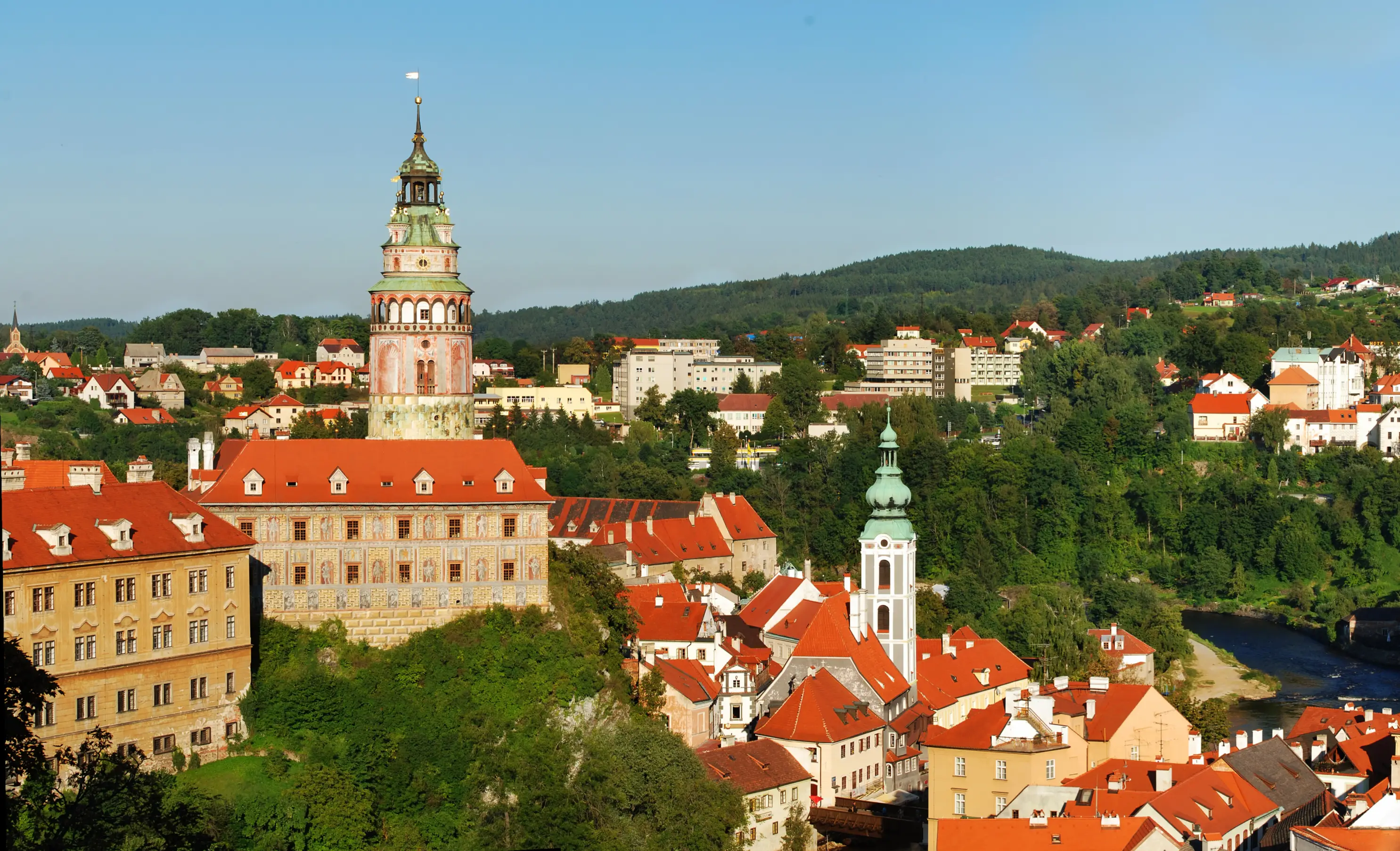
Cesky Krumlov
Cesky Krumlov is a charming little town in South Bohemia. It might be small, but it’s full of whimsical character and mystery. Walking through the narrow streets and across the bridge, the views of the medieval Cesky Krumlov Castle will take your breath away. At night, street musicians serenade visitors on the bridge where you can dance beneath the stars and the watchful eye of the magnificent tower. Dozens of unique local artisan shops, cafes, and restaurants are woven among the winding streets. In the summer, the city is lush with life and greenery. Rafters race down the river, stopping in the center along the way to enjoy a hearty meal before continuing their journey. In the winter, the main square transforms into a magnificent Christmas market and light blankets of snow cover the rooftops. This quaint little town will exceed your expectations and you may never want to leave.

Learn About Cesky Krumlov
Build Cesky Krumlov Trip
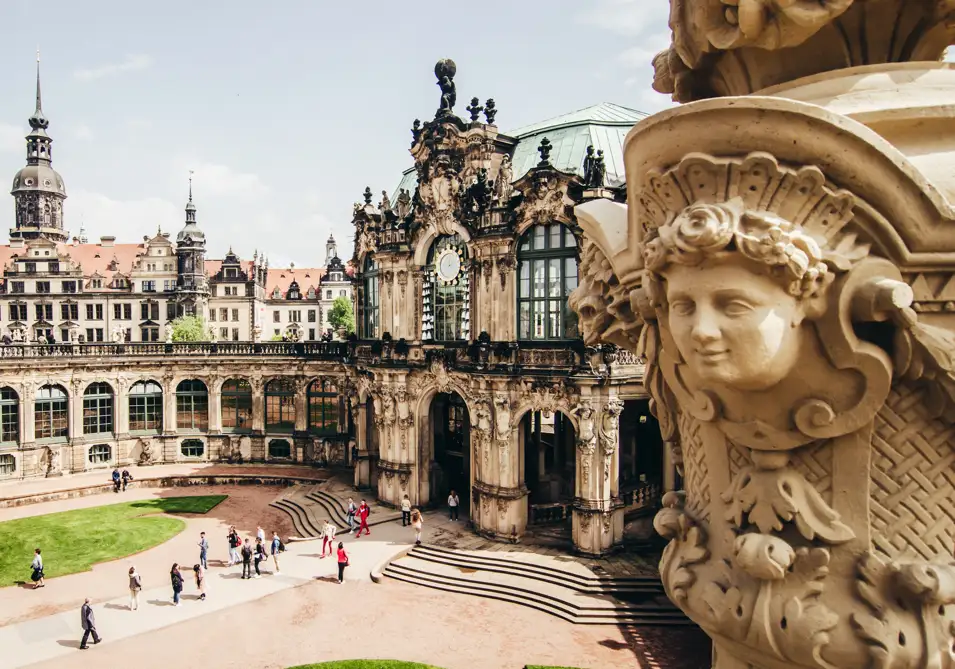
Dresden
Nearly every wall and rooftop in Dresden seems to be finished with a flourish. Defined by its ornamental baroque architecture, a power statement of Saxon royalty, Dresden is made all the more miraculous considering the city was leveled by firebombing in WWII. After the war, the city was reconstructed, brick by painstaking brick. Even under East German-Soviet rule, which usually eschewed frivolous design, buildings like the Semper Opera House were pieced back to their former glory. Restoration of the majestic Zwinger Palace and bell domed Church of Our Lady slowly followed, with the Frauenkirche only fully repaired in 2005. Arguably there is no other city in Europe that cherishes its hard-won architecture as much as Dresden. Although it is a compact city, so many of its buildings will stop you in your tracks that architecture fans will easily lose a whole day in the Old Town area. Especially during the winter months, Dresden sparkles with a joyous, uplifting ambiance. The city is recognized as having the best-ever Christmas market in all of Europe. Between the twinkling lights, the scent of hot wine and gingerbread, and the towering Christmas tree, it’s worth going out of your way to see Dresden at this time of year.

Learn About Dresden
Build Dresden Trip
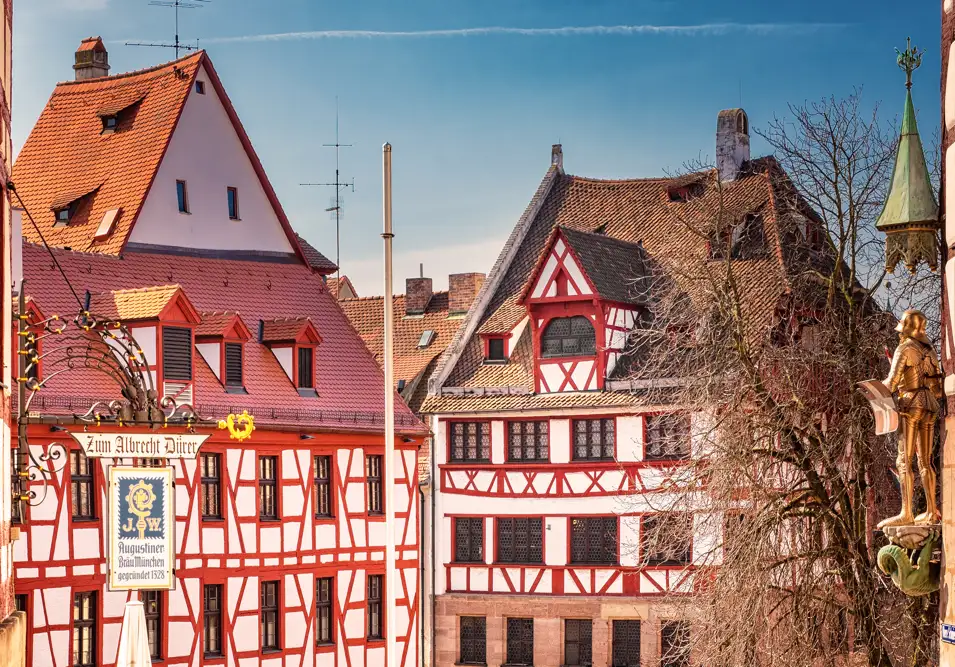
Nuremberg
One of the most authentic, storied German destinations, Nuremberg's picturesque old town, glorious castle, and buzzing Christmas Market makes this city a time-true classic. The ideal gateway to old Bavaria, Nuremberg offers a primer in German history before you embark on the lovely journey through old Bavaria, known as the Romantic Road. Considered the capital of the Holy Roman Empire in the middle ages, Nuremberg would have felt like the center of the world as a procession of kings and emperors passed through its magnificent gates. When the German Renaissance came, Nuremberg was at its heart. Albrecht Dürer, the great German master artist, was born here, and Martin Luther called Nuremberg Germany's 'eyes and ears'. Skip forward a few centuries, and the city took a dark turn, as Nuremberg became a gathering point for the German National Socialists. Slightly outside of town, you can still find the Nazi Party Rallying Grounds, a sobering reminder of the not so distant past. If it all gets too heavy, you can end the day with a glass of rotbier (red beer) and mull it over. Nuremberg is a must-see for anyone who wants to delve into Germany's past.

Learn About Nuremberg
Build Nuremberg Trip

Prague
The city of Prague is indisputably the gem of Central Europe. Full of history, culture, and classic Czech pubs around every corner, Prague is teeming with nooks and crannies just waiting to be discovered. The narrow cobblestone streets and warm red rooftops give the city a homey feel, while the well-preserved medieval architecture transports you back in time. Walking across the Charles Bridge with the view of the Prague Castle will make you feel like you’re living in a fairytale, and you might as well be. As an up-and-coming destination, Prague is a perfect mix of classic and modern. New trendy cafes and bistros are always popping up, and you can always find a group of lively locals chowing down on goulash and quaffing pivo (the best beer in Europe!) at traditional Czech restaurants across the city. The clash of modernity and tradition, preservation and innovation, gives this city a mysterious air that you won’t soon forget.

Learn About Prague
Build Prague Trip
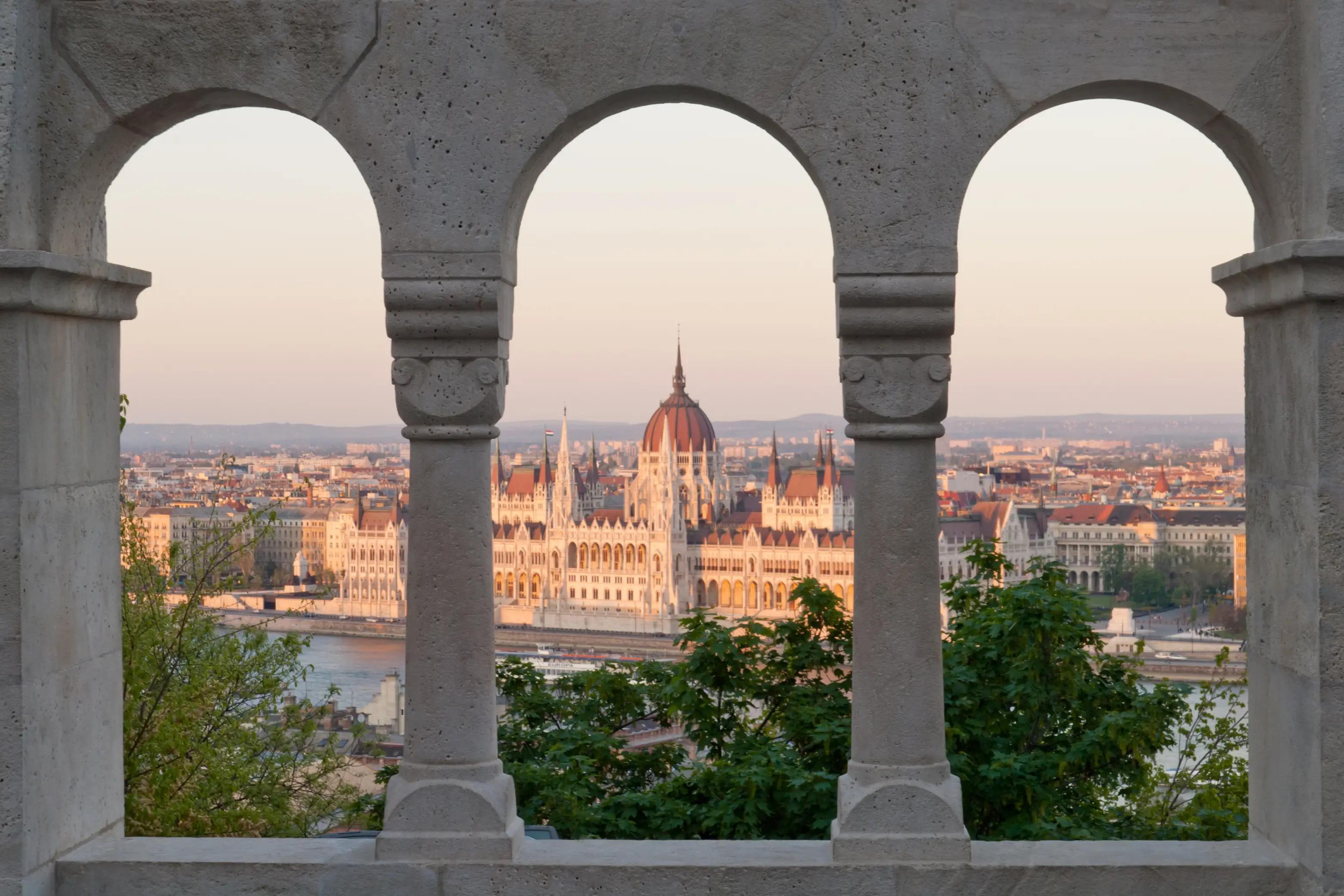
Budapest
Situated at the heart of Europe, Budapest is the capital of Hungary, appropriately named 'The Pearl of the Danube,' for its fixating and almost haunting beauty. Formerly two separate cities, Buda and Pest were forged into one by time, occupation, and the eight bridges that anchor them together today. From the Romans to the Communists, each occupier left its flavor profile in Budapest, evident in the famous spicy Hungarian stew known as 'goulash.' Budapest is a melting pot of history, culture, and taste, from the magnificent Baroque and neo-Gothic architecture to the Turkish thermal baths. After a long day of sightseeing, treat yourself to a glass of Tokaj, what King Louis XIV of France referred to as the "Wine of Kings, King of Wines". Budapest has a flavor to satisfy any taste.

Learn About Budapest
Build Budapest Trip
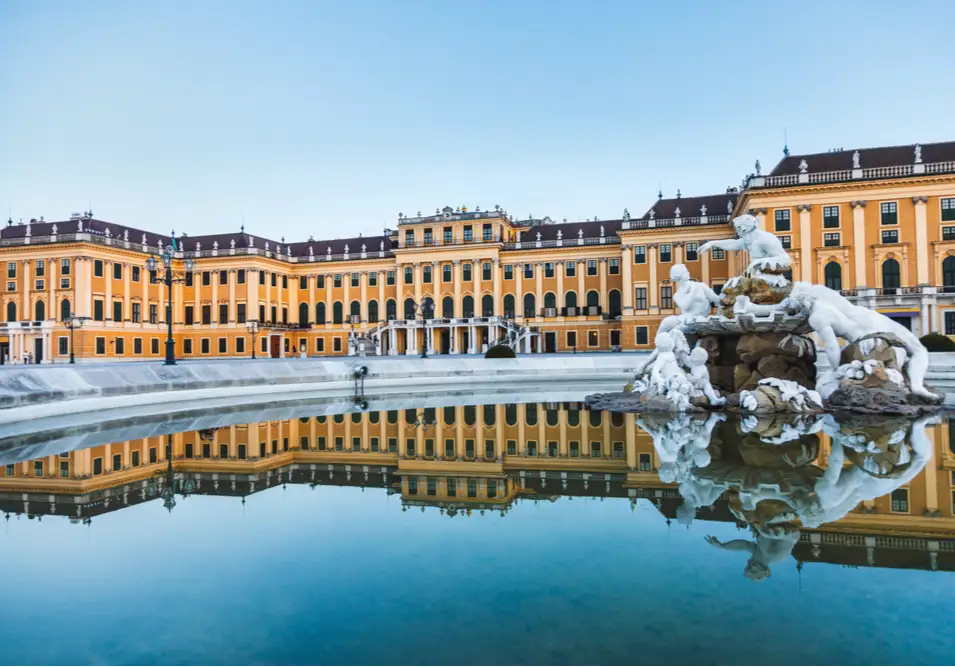
Vienna
Artistic and musical, historical and elegant, Vienna is the definition of class. The seat of the Habsburg monarchy for over six centuries, it's no wonder this city is still fit for royalty. Baroque buildings and imperial palaces dominate the cityscape, while locals stride gracefully through the streets, likely on their way to a classical music concert or art exhibition. Visitors from all over the world flock to Schonbrunn Palace, historical museums, and local eateries for authentic Viennese schnitzel. Vienna is also home to world-class wining and dining. Famous dishes include Wiener schnitzel, Tafelspitz (prime boiled beef), and apfelstrudel (apple strudel), all of which pair well with a glass of fine Austrian wine. No matter how long you spend in Vienna, you'll leave with a new appreciation for the finer things in life.

Learn About Vienna
Build Vienna Trip

Cesky Krumlov
Cesky Krumlov is a charming little town in South Bohemia. It might be small, but it’s full of whimsical character and mystery. Walking through the narrow streets and across the bridge, the views of the medieval Cesky Krumlov Castle will take your breath away. At night, street musicians serenade visitors on the bridge where you can dance beneath the stars and the watchful eye of the magnificent tower. Dozens of unique local artisan shops, cafes, and restaurants are woven among the winding streets. In the summer, the city is lush with life and greenery. Rafters race down the river, stopping in the center along the way to enjoy a hearty meal before continuing their journey. In the winter, the main square transforms into a magnificent Christmas market and light blankets of snow cover the rooftops. This quaint little town will exceed your expectations and you may never want to leave.

Learn About Cesky Krumlov
Build Cesky Krumlov Trip

Dresden
Nearly every wall and rooftop in Dresden seems to be finished with a flourish. Defined by its ornamental baroque architecture, a power statement of Saxon royalty, Dresden is made all the more miraculous considering the city was leveled by firebombing in WWII. After the war, the city was reconstructed, brick by painstaking brick. Even under East German-Soviet rule, which usually eschewed frivolous design, buildings like the Semper Opera House were pieced back to their former glory. Restoration of the majestic Zwinger Palace and bell domed Church of Our Lady slowly followed, with the Frauenkirche only fully repaired in 2005. Arguably there is no other city in Europe that cherishes its hard-won architecture as much as Dresden. Although it is a compact city, so many of its buildings will stop you in your tracks that architecture fans will easily lose a whole day in the Old Town area. Especially during the winter months, Dresden sparkles with a joyous, uplifting ambiance. The city is recognized as having the best-ever Christmas market in all of Europe. Between the twinkling lights, the scent of hot wine and gingerbread, and the towering Christmas tree, it’s worth going out of your way to see Dresden at this time of year.

Learn About Dresden
Build Dresden Trip

Nuremberg
One of the most authentic, storied German destinations, Nuremberg's picturesque old town, glorious castle, and buzzing Christmas Market makes this city a time-true classic. The ideal gateway to old Bavaria, Nuremberg offers a primer in German history before you embark on the lovely journey through old Bavaria, known as the Romantic Road. Considered the capital of the Holy Roman Empire in the middle ages, Nuremberg would have felt like the center of the world as a procession of kings and emperors passed through its magnificent gates. When the German Renaissance came, Nuremberg was at its heart. Albrecht Dürer, the great German master artist, was born here, and Martin Luther called Nuremberg Germany's 'eyes and ears'. Skip forward a few centuries, and the city took a dark turn, as Nuremberg became a gathering point for the German National Socialists. Slightly outside of town, you can still find the Nazi Party Rallying Grounds, a sobering reminder of the not so distant past. If it all gets too heavy, you can end the day with a glass of rotbier (red beer) and mull it over. Nuremberg is a must-see for anyone who wants to delve into Germany's past.

Learn About Nuremberg
Build Nuremberg Trip

Prague
The city of Prague is indisputably the gem of Central Europe. Full of history, culture, and classic Czech pubs around every corner, Prague is teeming with nooks and crannies just waiting to be discovered. The narrow cobblestone streets and warm red rooftops give the city a homey feel, while the well-preserved medieval architecture transports you back in time. Walking across the Charles Bridge with the view of the Prague Castle will make you feel like you’re living in a fairytale, and you might as well be. As an up-and-coming destination, Prague is a perfect mix of classic and modern. New trendy cafes and bistros are always popping up, and you can always find a group of lively locals chowing down on goulash and quaffing pivo (the best beer in Europe!) at traditional Czech restaurants across the city. The clash of modernity and tradition, preservation and innovation, gives this city a mysterious air that you won’t soon forget.

Learn About Prague
Build Prague Trip

Budapest
Situated at the heart of Europe, Budapest is the capital of Hungary, appropriately named 'The Pearl of the Danube,' for its fixating and almost haunting beauty. Formerly two separate cities, Buda and Pest were forged into one by time, occupation, and the eight bridges that anchor them together today. From the Romans to the Communists, each occupier left its flavor profile in Budapest, evident in the famous spicy Hungarian stew known as 'goulash.' Budapest is a melting pot of history, culture, and taste, from the magnificent Baroque and neo-Gothic architecture to the Turkish thermal baths. After a long day of sightseeing, treat yourself to a glass of Tokaj, what King Louis XIV of France referred to as the "Wine of Kings, King of Wines". Budapest has a flavor to satisfy any taste.

Learn About Budapest
Build Budapest Trip

Vienna
Artistic and musical, historical and elegant, Vienna is the definition of class. The seat of the Habsburg monarchy for over six centuries, it's no wonder this city is still fit for royalty. Baroque buildings and imperial palaces dominate the cityscape, while locals stride gracefully through the streets, likely on their way to a classical music concert or art exhibition. Visitors from all over the world flock to Schonbrunn Palace, historical museums, and local eateries for authentic Viennese schnitzel. Vienna is also home to world-class wining and dining. Famous dishes include Wiener schnitzel, Tafelspitz (prime boiled beef), and apfelstrudel (apple strudel), all of which pair well with a glass of fine Austrian wine. No matter how long you spend in Vienna, you'll leave with a new appreciation for the finer things in life.

Learn About Vienna
Build Vienna Trip
prev
next


 Map of Your Itinerary Route
Map of Your Itinerary Route
Zoom In to the cities to see your itinerary in more detail


 4.8
4.8 